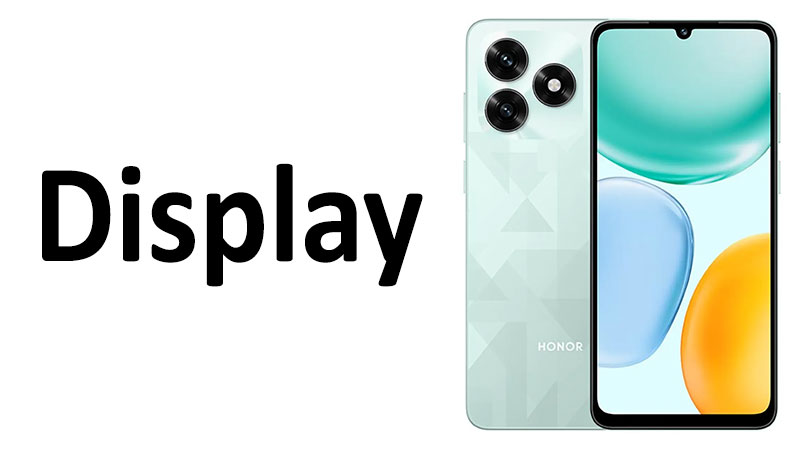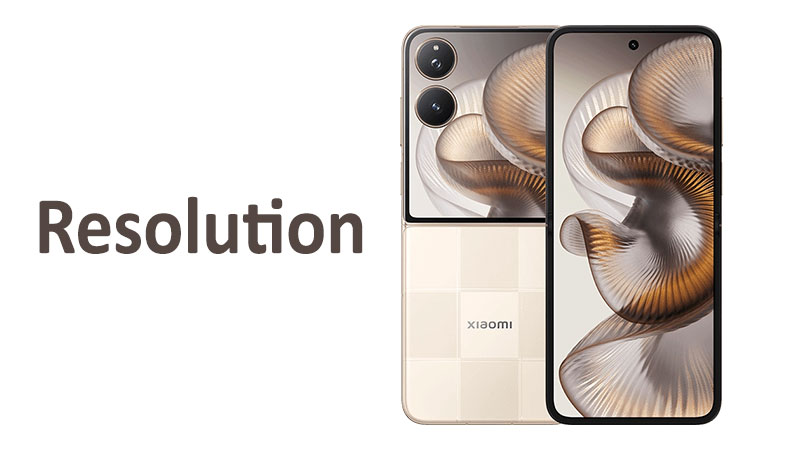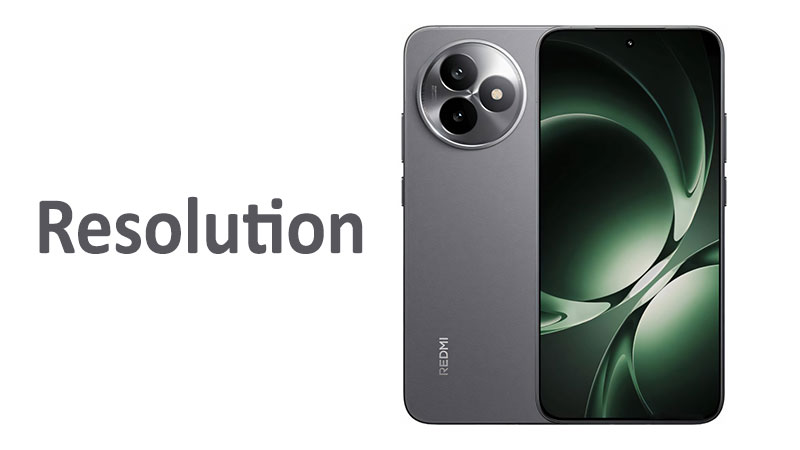The Honor Play 10A display often dictates the overall user experience of this budget device. Understanding its specifications is crucial before making a purchase decision. This comprehensive review dives deep into the Honor Play 10A screen. We analyze its technology, refresh rate, resolution, and real-world quality. This article serves as your ultimate guide. It will explore whether the display meets the demands of modern mobile usage. We will help you determine if this screen is right for your daily needs.
A Comprehensive Examination of the Honor Play 10A Display Specs
The display is the primary interface for any smartphone user. Its quality directly impacts activities like browsing, gaming, and consuming media. Honor equipped the Play 10A with a specific set of components. These components balance cost-efficiency with functional performance. Understanding these details helps set proper expectations for the phone’s visual output.
Display Technology: The Role of TFT LCD
The Honor Play 10A display utilizes Thin-Film-Transistor Liquid Crystal Display, or TFT LCD, technology. This is a common choice in the entry-level smartphone segment. It provides a reliable and cost-effective visual solution. TFT LCD panels are mature and inexpensive to manufacture. This allows Honor to keep the overall device price competitive.
Technical Deep Dive into TFT
TFT LCD is an evolution of earlier LCD panels. Each pixel is individually controlled by a tiny transistor. This transistor acts like a switch. It allows for faster response times and improved image quality compared to older passive-matrix displays. Therefore, the display can handle faster motion with less ghosting. The technology uses a backlighting system. This light shines through the liquid crystals to produce the image.
Comparison: TFT Versus AMOLED
It is important to compare TFT LCD against more premium technologies. High-end and mid-range phones often feature AMOLED or OLED panels. These panels are distinct from TFT LCDs. AMOLED screens emit their own light per pixel. As a result, they offer truly perfect blacks and infinite contrast ratios. TFT LCDs, conversely, always require a backlight. This means blacks will appear slightly grey. This can be noticeable when viewing the Honor Play 10A screen in a dark environment. However, TFT LCDs can still produce good brightness. This helps maintain visibility outdoors. The cost difference is the main reason for Honor’s choice.
Real-World Impact of TFT on Quality
The use of TFT technology influences color reproduction. Colors on the Honor Play 10A display may appear less vibrant than on an AMOLED panel. The color gamut is often narrower. Viewing angles are another factor to consider. Color shift and brightness drop can occur at extreme angles. This is typical for budget TFT screens. Users should try to view the screen straight on for the best experience. Despite these trade-offs, the TFT LCD provides consistent visual performance. It is reliable for everyday tasks like reading and social media browsing.
The Fluidity Factor: Exploring the 90Hz Refresh Rate
A key selling point for the Honor Play 10A display is its 90Hz refresh rate. This feature significantly enhances the perception of speed and smoothness. It is a major upgrade over the standard 60Hz panels found in many competing budget phones.
Understanding Refresh Rate
The refresh rate dictates how many times per second the screen updates its image. A standard 60Hz panel refreshes 60 times every second. The Honor Play 10A’s 90Hz screen updates 90 times per second. This 50% increase in refresh speed is instantly noticeable to the user. This higher rate reduces motion blur. It makes on-screen movement much crisper.
Benefits for Daily Usage and Gaming
The 90Hz capability primarily benefits two core activities. First, general navigation becomes remarkably smoother. Scrolling through long websites feels fluid and effortless. Animations open and close without juttering. Second, casual gaming also improves dramatically. Games that support the higher frame rate feel more responsive. This is a significant competitive edge for the Honor Play 10A display in its price bracket.
Power Consumption Considerations
A higher refresh rate also consumes more battery power. The screen updates more frequently, demanding more energy from the system. Honor likely implemented dynamic refresh rate switching. This feature automatically reverts to 60Hz when 90Hz is not necessary. For instance, the screen switches to 60Hz when viewing static images. This intelligent power management helps preserve battery life. Therefore, users get the benefit of smoothness without constant battery drain. This is a crucial balancing act for mobile displays.
Size and Immersion: The 6.74-inch Panel
The Honor Play 10A features a large 6.74-inch display. This generous size caters to the modern demand for immersive visual experiences. Large screens are popular for media consumption and multitasking. They provide ample space for content. This makes the phone suitable for movie watchers and mobile readers.
The Screen-to-Body Ratio
The physical size of the display is coupled with a commendable screen-to-body ratio. The Honor Play 10A achieves an approximate 85.3% screen-to-body ratio. This metric is very important for overall design aesthetics. It indicates that the bezels around the display are relatively thin. This maximizes the usable screen area. Thin bezels contribute to a more modern and premium look. This higher ratio improves the sense of immersion when watching videos.
Handling and Ergonomics
A 6.74-inch phone is undoubtedly large. This size can present ergonomic challenges for some users. One-handed operation becomes more difficult. Many users must employ two hands to comfortably reach all corners of the screen. However, this large format is ideal for split-screen multitasking. Users can easily view two applications side-by-side. The large display is a major advantage for productivity. Overall, the 6.74-inch Honor Play 10A screen size offers significant benefits.
Resolution and Clarity: 720 x 1600 Pixels
The resolution of the Honor Play 10A display is 720 x 1600 pixels. This resolution configuration results in an HD+ display. It follows a vertical 20:9 aspect ratio. This cinematic ratio is common in modern smartphones. It is well-suited for widescreen video content. However, the resulting clarity requires closer examination.
Pixel Density Analysis
The resolution translates to a pixel density of approximately 260 pixels per inch, or ppi. Pixel density determines the sharpness of the image. A higher ppi means individual pixels are less visible. The 260 ppi density is considered entry-level in today’s market. Many competitors offer Full HD+ displays, which have around 400 ppi.
Real-World Sharpness
Text and fine details may appear slightly softer on the Honor Play 10A display. Users with exceptionally sharp eyesight might notice the lack of pin-sharp clarity. Images and video may not look as crisp as they would on a higher-resolution screen. However, for general use, the 720p resolution is entirely functional. The vast majority of mobile applications and streaming content still look good. The larger screen size exacerbates the lower resolution slightly. Despite this, the display remains clear enough for comfortable daily viewing.
The Trade-Off Between Resolution and Performance
Honor likely chose this 720p resolution to prioritize two other factors. First, it helps maintain the device’s budget price point. Higher resolution screens are more expensive. Second, lower resolution demands less processing power. The phone’s GPU has fewer pixels to render at the high 90Hz refresh rate. This ensures smoother performance and better frame rates. The choice is a deliberate compromise. It favors smooth motion over ultimate sharpness.
Specialized Comparisons and Context
Evaluating the Honor Play 10A display requires context. We must compare its features against both its predecessor and key market competitors. This comparison highlights where the device stands out and where it lags behind.
Comparing Against the Honor Play 9A Display
The Honor Play 9A featured a standard 60Hz refresh rate. It also had a smaller screen size. The upgrade to 90Hz on the Honor Play 10A is therefore significant. This single change provides a massive boost to the perceived user experience. The 90Hz panel makes the 10A feel faster and more modern. Screen size also increased from the previous generation. This offers a more immersive visual experience for consumers. Honor focused on a smoother scrolling and viewing experience in this update.
Competing with Full HD+ Rivals
Many budget smartphones in the same price range offer Full HD+ resolution. These 1080p displays deliver significantly higher pixel density. This results in sharper text and clearer images. Devices from brands like Xiaomi or Realme often include 1080p panels. The Honor Play 10A makes a trade-off here. It sacrifices resolution for the 90Hz refresh rate. Buyers must decide which feature they value more. Do they prefer a smooth, fluid experience, or do they prioritize ultimate clarity? This choice separates the Honor Play 10A from many of its direct rivals.
The Pros and Cons of the Honor Play 10A Screen
Understanding the balance of strengths and weaknesses is essential. This section summarizes the key advantages and disadvantages of the Honor Play 10A display.
The Advantages (Pros)
The display offers several compelling benefits for the price segment. The high refresh rate is the most significant selling point.
- Fluid 90Hz Motion: The display provides visibly smoother scrolling and animations. This greatly enhances the daily interaction experience. It is a major competitive advantage for the device.
- Large Screen Size: The 6.74-inch display is excellent for media consumption. It offers an expansive canvas for videos and games. The size also facilitates split-screen usage.
- Good Screen-to-Body Ratio: Thin bezels contribute to a modern appearance. The design maximizes the available viewing area. This creates a more immersive visual feel.
- Cost Efficiency: The TFT LCD technology keeps manufacturing costs low. This translates directly into a more affordable price for the consumer.
The Disadvantages (Cons)
The budget nature of the panel also introduces several inevitable drawbacks. Buyers should be aware of these limitations.
- Lower Clarity: The 720p resolution results in a lower pixel density of 260 ppi. This makes the screen less sharp than 1080p rivals. Fine details might appear slightly soft.
- TFT LCD Limitations: Color saturation and contrast are inferior to AMOLED panels. Black levels are not truly deep black due to the required backlight. Viewing angles are also generally poorer.
- Outdoor Visibility: While brightness is decent, the TFT LCD struggles more in direct sunlight. This is a common issue compared to higher-end displays. This can make the screen challenging to use outside on bright days.
Important Considerations for a Potential Buyer
A buyer needs to weigh their priorities before choosing the Honor Play 10A. The display quality should match the user’s intended primary usage. Here are the most important points to consider.
Prioritizing User Experience Over Technical Specs
The Honor Play 10A prioritizes smoothness over sharpness. The 90Hz refresh rate is a huge win for general usage. This feature provides a sense of speed that the lower resolution detracts from. If your main activities are social media, web browsing, and messaging, this trade-off is often worthwhile. Smooth scrolling makes the phone feel more premium than its price suggests.
The Role of Media Consumption
If you watch a lot of high-definition content, the 720p resolution is a drawback. Streaming services like Netflix and YouTube support higher resolutions. The Honor Play 10A screen will not display content in true Full HD. Furthermore, the TFT panel’s color reproduction is limited. Movie enthusiasts might find the visuals slightly lacking in vibrancy and depth. However, the large 6.74-inch size is still great for viewing.
Impact on Gaming Performance
The 90Hz refresh rate benefits mobile gaming significantly. It reduces input lag and motion blur. This is especially true in fast-paced games that support 90 frames per second. Competitive mobile gamers will appreciate the increased fluidity. The GPU does not need to push high-resolution textures. This leads to stable frame rates and a better gaming experience. The display is a solid choice for budget-conscious gamers.
Understanding the TFT Limitations
Buyers must accept the limitations of TFT LCD technology. You should not expect the deep contrast of an OLED display. The blacks will be slightly grey. Colors will be less punchy. These are acceptable compromises in the budget segment. Recognizing this helps manage expectations. Overall, the Honor Play 10A display delivers reliable performance for its class.
Conclusion: Making an Informed Decision
The Honor Play 10A display package is a carefully engineered compromise. Honor made deliberate decisions to meet a budget price point. It integrates a large 6.74-inch TFT LCD panel. The 720 x 1600 pixel resolution results in 260 ppi density. This is generally considered average in today’s market. However, the inclusion of a 90Hz refresh rate is a significant upgrade. This high refresh rate provides exceptional fluidity and smoothness.
This screen is best suited for users who value a large, fluid display experience. It is ideal for individuals who prioritize seamless scrolling and responsive gaming over razor-sharp clarity. The 90Hz capability makes the device feel much quicker than its specifications might suggest. It elevates the daily user experience above many 60Hz rivals.
The limitations, such as the 720p resolution and the TFT panel’s lack of deep blacks, are relevant. Serious media consumers who demand vibrant, high-contrast visuals should look elsewhere. However, for a user seeking excellent value, the Honor Play 10A display is compelling. It successfully balances a large size, modern aspect ratio, and a smooth refresh rate. The Honor Play 10A screen offers a compelling visual package that is worth considering.
Frequently Asked Questions (FAQ)
What is the screen resolution of the Honor Play 10A display?
The Honor Play 10A features a resolution of 720 x 1600 pixels. This is also known as HD+ resolution. The display has an elongated 20:9 aspect ratio.
Does the Honor Play 10A display support 90Hz?
Yes, the Honor Play 10A screen supports a 90Hz refresh rate. This feature allows for smoother animations and more fluid scrolling compared to standard 60Hz displays.
Is the Honor Play 10A screen AMOLED or LCD?
The Honor Play 10A uses a TFT LCD panel. This technology is more cost-effective than AMOLED. It requires a continuous backlight to illuminate the pixels.
What is the pixel density of the Honor Play 10A screen?
The Honor Play 10A display has a pixel density of approximately 260 pixels per inch, or ppi. This density is typical for an entry-level HD+ smartphone.
How does the 90Hz refresh rate affect battery life?
The 90Hz refresh rate typically consumes more power than 60Hz. Honor likely uses an adaptive system. This system automatically switches to a lower rate when appropriate to conserve battery life.



